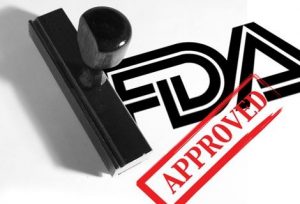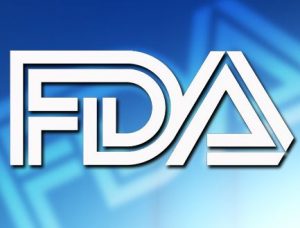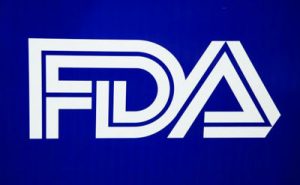FDA Finally Issues Proposed Regulations for Electronic Cigarettes
 It has taken the Food and Drug Administration five long years to finally issue proposed regulations for electronic cigarettes, after failed attempt to establish authority over them as drugs or drug delivery devices, in 2009. The highly anticipated announcement was made yesterday, and was received with mixed reactions.
It has taken the Food and Drug Administration five long years to finally issue proposed regulations for electronic cigarettes, after failed attempt to establish authority over them as drugs or drug delivery devices, in 2009. The highly anticipated announcement was made yesterday, and was received with mixed reactions.
US cities and states have been busy issuing their own rules regarding the use and sales of electronic cigarettes, but everyone, from consumers and manufacturers, to advocates and opponents, was impatiently waiting for the FDA to issue a set of recommended regulations. On Thursday, April 24th, the Administration finally released a 241-page document containing a series of rules and restrictions for the e-cigarette industry. Basically, it gives the Food and Drug Administration authority to oversee the increasingly popular devices, much in the way it regulates tobacco cigarettes.
Before commenting on whether this long awaited (and feared by many) proposed regulations are a step forward or backward for electronic cigarettes, let’s have a look at some of the key points tackled in the document:
-
- The newly issued regulations ban the sale of electronic cigarettes to minors, both in person and via the internet. This is generally regarded as a necessary and positive measure set to keep a product intended only for adults out of the hands of children and teens. It also makes it unnecessary for cities and states in the US to issue their own sale restrictions;
- The FDA chose not to ban the use of sweet and fruity flavorings in e-cigarettes. Despite the strong efforts of e-cig opponents and anti-smoking groups to convince everyone that enticing flavors were used by the industry to attract children, the FDA seems to have realized that flavorings are one of the key aspects of what makes electronic cigarettes so effective in helping people switch from tobacco cigarettes;
- Regulations do not ban the sale of electronic cigarettes over the internet. Most e-cigarette companies on the market to day commercialize their products online, so limiting the sale of e-cigs to offline mediums only would have likely put many of them out of business and hindered growth in this unique sector;
- The new regulations require pre-approval for all new e-cigarette models and existing models introduced on the market after 2007. Most e-cigarettes available today became available after the year 2007, and every company that sells them are required to apply for pre-approval or substantial equivalence determination. The FDA is known for taking long periods of time to go through the mountains of paperwork and evidence needed to grant approval, and with around 250 major e-cigarette brands affected by this rule, we’re likely to see hundreds of pending applications. Any new e-cigarette models will have to get pre-approval as well, which is not exactly ideal for an industry that relies on innovation. Small companies which reinvest most of their profits may not even afford the expenses of getting new products approved for sale, which is why this rule is seen as a clear advantage to large e-cig brands and tobacco companies that have entered the e-cigarette market;
- Regulations do not immediately pull any e-cigarette products from the market. One of the biggest fears prior to the announcement of FDA’s ruling on e-cigs was that it was going to withdraw some products from the market while making substantial equivalence determinations. Instead, the Administration decided to allow all existing e-cigs to remain on the market, giving companies a period of two years to register for FDA approval. New products will also be allowed on the market in this 24-month period without any pre-approval. Products submitted for approval during the two-year time limit will also not be taken off the market while their application is being reviewed;
- Regulations require e-cigarette to feature health warnings that they contain nicotine, which is addictive. A ban on the sale of e-cigs from vending machines is also included, unless the machines are located in places that never admit minors;
- Regulations do not restrict advertising and marketing of electronic cigarettes. Not even the contested TV commercials for e-cigarettes have been affected by the new FDA regulations, but it is likely the Agency will revisit this issue in the future. However, companies will no loner be able to give out free samples of their products;
- Section 911 of the Tobacco Act (the modified risk product provisions) now applies to electronic cigarettes. Because the FDA decided it is not sure e-cigarettes actually are safer than tobacco cigarettes, it is using Section 911 to prevent companies from specifying that electronic cigarettes are safer than analogs. Under the Tobacco Act, e-cig brands cannot even specify that their e-cigs don’t produce smoke, because that would be considered a “reduced exposure”.
The announcement of FDA proposed regulations for electronic cigarettes will now be followed by a 75-day public comment period, after which manufacturers will have a two-year period to submit their products for FDA approval, in order to keep their existing products on the market or introduce new ones.
This initial rule set seems fairly permissive, and many anti-smoking advocates and e-cigarette opponents were quick to criticize the FDA for not taking a firmer stand in the name of public health. Stan Glantz, probably e-cigs’ greatest critic told the New York Times that “Right now we have a little fire and a little bucket of water. They are saying, ‘Let’s just watch the fire for a few years, and if it turns into a big fire we’ll deal with it with this same little bucket.'”
However, Mitch Zeller, director of the FDA’s Center for Tobacco Products, was quick to explain the Agency’s cautious approach to regulating electronic cigarettes: “Right now this rapidly evolving marketplace is rapidly evolving with no regulation whatsoever,” he said on Wednesday. “Now, for the first time, there will be a science-based regulatory agency playing a gate-keeping function.” Matthew Myers, president of Campaign for Tobacco-Free Kids, believes the whole issue is so volatile that any premature action would have only set the regulatory process backwards. “If the F.D.A. did this without a solid scientific record, then everyone would have felt good for 20 minutes, the industry would have sued and we would have gone back to ground zero.”
Michael Siegel, a Professor in the Department of Community Health Sciences at Boston University’s School of Public Health, believes that as a whole, the new regulations spell disaster for the e-cigarette industry and public health. While he recognizes things could have turn out even worse, he believes the FDA’s rules are not based on science and seek to prevent the e-cig industry from really challenging Big Tobacco. “The deeming regulations take away both the prospect of innovation and the incentive to introduce new products. Essentially, these regulations freeze the current market of electronic cigarettes, or at least of those electronic cigarettes which were most like the products already on the market in 2007,” Siegel writes on his blog.
Some voices from the e-cig industry applauded the FDA’s ruling on e-cigarettes. “What they did today was very encouraging,” said Miguel Martin, president of Logic Technology Development, one of the biggest e-cigarette brands in America. “At least speaking for my company, this will not be the tobacco wars of the ’80s and ’90s.” Others view it as the beginning of the end for smaller brands. This is worse than I expected,” said Greg Conley, a board member of the American Vaping Association. “A lot of these companies, they are supporting several employees, investing any profits back into their business. . . . They can’t afford this, and it’s going to lead to a whole lot of consolidation and increased prices for consumers.”
Opinions on FDA regulations vary greatly, mostly because the 241-page document is really vague in explaining how exactly the new rules are going to be applied, and hardly even mentions nicotine levels and e-liquid in general. For example, one knows exactly what mechanism they plan to use to limit online sales to adults online, or how e-cigarettes adverts are going to avoid attracting the attention of minors.
Regarding complaints that some controversial points were not included in the FDA’s regulations, Mitch Zeller said: “We’re not being coy, when the way to make policy is through rule making, there has to be a sufficient regulatory science base to support it.” Science takes time however, so where likely looking at years of changes to these new rules, hopefully based on sound scientific research.
Sources: The New York Times, CNN, The Washington Post, Tobacco Analysis.















